If you’ve ever sunk your fork into a cloud and thought, “I wish this tasted like cheesecake,” well, you’re in luck. This Japanese cotton cheesecake is all about airy texture, gentle sweetness, and that melt-in-your-mouth moment that makes everything pause for a second. We love how it fits perfectly into the category of Japanese Food Recipes—especially for those who like to play with both the oven and patience. It’s a great fit for anyone wanting to explore Japanese Food Recipes Easy or planning a cozy Japanese Food Dinner at home. Want to impress at your next gathering? This works as a standout Japanese Food Dessert or a sweet twist on Traditional Japanese Food Recipes. It even ticks the box for Japanese Dessert Recipes. Now, full disclosure: this cake’s a little dramatic in the oven—it rises, it sighs, it falls just a little. But when you taste that pillowy slice with a cup of tea, it’s all forgiven. If you’re baking this for the first time, welcome to a delicious initiation into Japanese Meals you’ll want to revisit again and again.
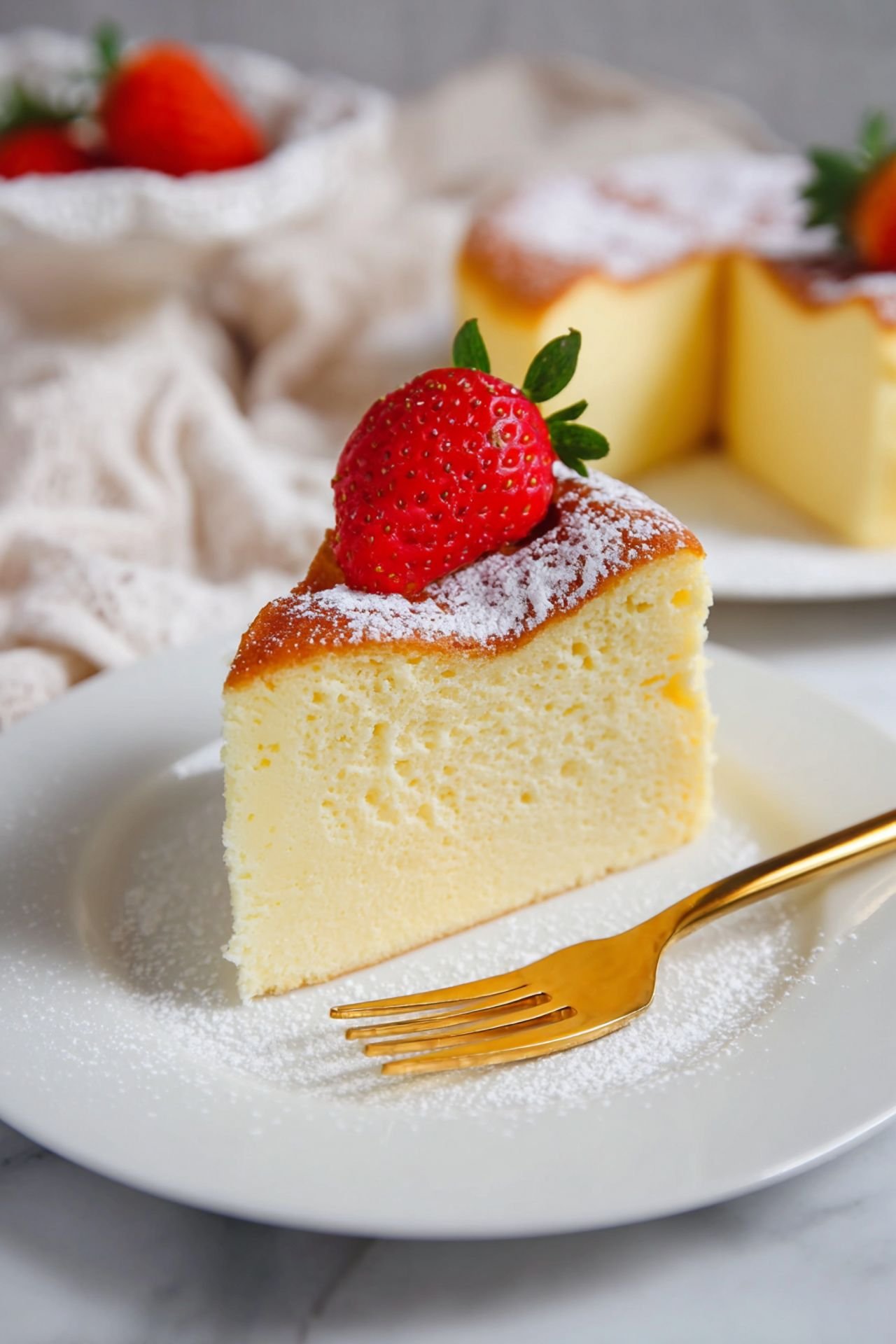
Table of Contents
- 1) Key Takeaways
- 2) Easy Japanese Cotton Cheesecake Recipe
- 3) Ingredients for Japanese Cotton Cheesecake
- 4) How to Make Japanese Cotton Cheesecake
- 5) Tips for Making Japanese Cotton Cheesecake
- 6) Making Japanese Cotton Cheesecake Ahead of Time
- 7) Storing Leftover Japanese Cotton Cheesecake
- 8) Try these Dessert Recipes next!
- 9) Japanese Cotton Cheesecake
- 10) Nutrition
1) Key Takeaways
- This Japanese cotton cheesecake is pillow-soft, airy, and lightly sweet.
- You’ll need to bake it in a water bath for the best fluffy results.
- It’s a great intro to Japanese dessert recipes if you’re a beginner baker.
- Plan for time to chill it—it slices better after cooling completely.
2) Easy Japanese Cotton Cheesecake Recipe
If you’re after something that’s equal parts cozy and elegant, this Japanese cotton cheesecake is your answer. From the first forkful, you’ll know this one’s a keeper. It tastes like someone baked a cheesecake and whispered “soufflé” over it before shutting the oven door. The texture? Dreamy. Light as air. It jiggles like it’s got secrets.
Now, I know Japanese Food Recipes can sound intimidating, especially if you’re more comfortable with a boxed brownie mix. But this one’s worth it. It’s got that unmistakable fluff that sets it apart from dense Western-style cheesecakes. It’s less sweet, which means you won’t feel like you need a nap after a slice. I’ve made this on a whim and watched the whole thing vanish in a single evening.
We’re diving into a fun cross between dessert and magic trick. And trust me, the payoff is so worth it. Whether you’re already deep into Traditional Japanese Food Recipes or just want something different from the usual, you’re in the right spot.
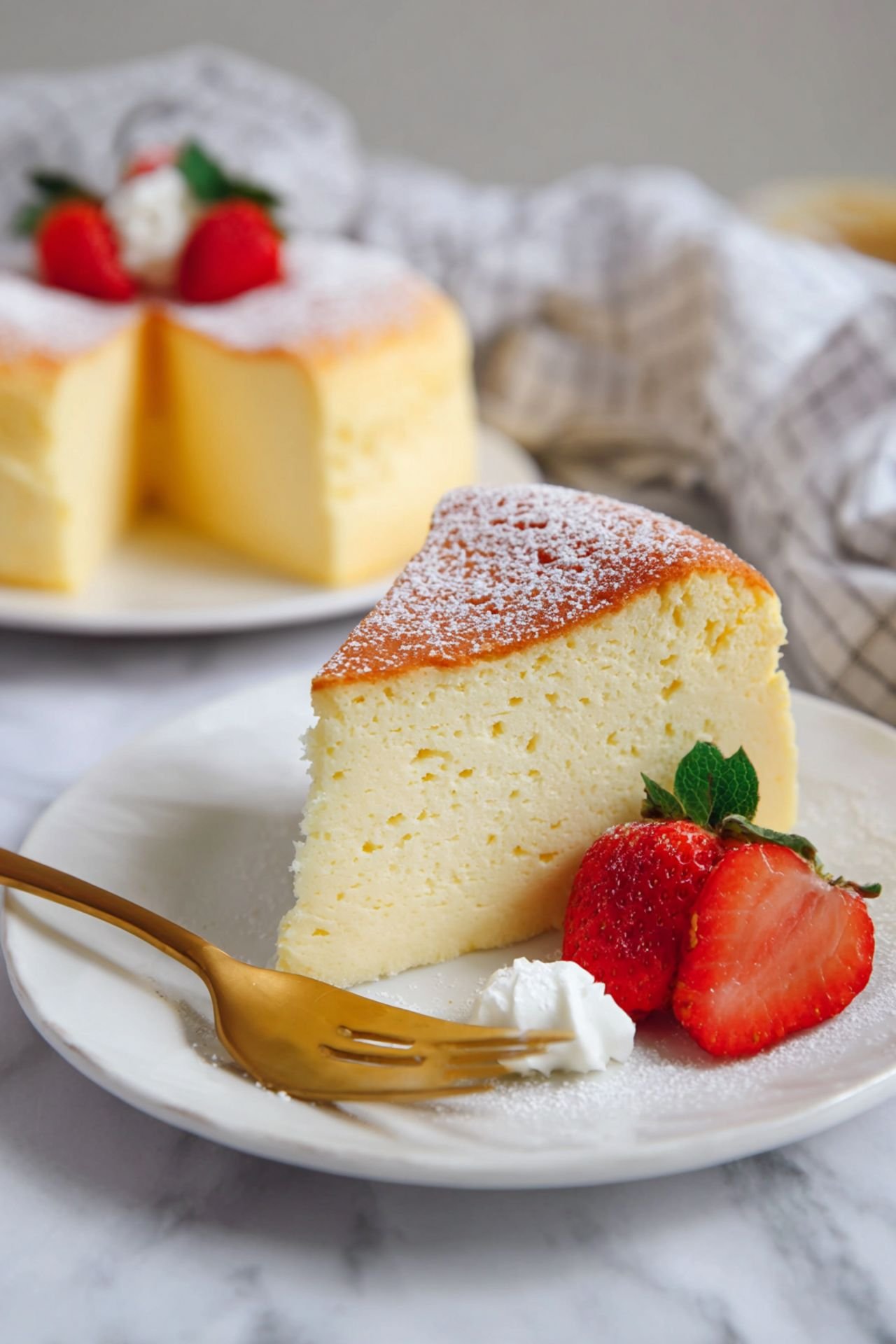
3) Ingredients for Japanese Cotton Cheesecake
Cream Cheese: Use full-fat cream cheese, and let it come to room temp so it blends smoothly. Cold blocks will fight your whisk and ruin the texture. Trust me. Been there.
Unsalted Butter: This gives the cheesecake that rich, velvety backdrop. Don’t swap in margarine or oil—you’ll miss the creamy flavor that makes this dessert shine.
Whole Milk: Go for whole milk. It helps thin the cheese and butter mix without making things watery. Warm it slightly so it doesn’t shock the other ingredients.
Eggs: Six of them. Separated. The yolks give it body. The whites get whipped into glossy peaks and folded in like a love letter. They’re key to the cotton-soft bite.
Cake Flour: It’s finer than all-purpose and keeps everything tender. Don’t have it? A mix of all-purpose and cornstarch can sub, but results may vary a little.
Cornstarch: Just a bit, to help with stability and that melt-in-your-mouth finish. Think of it as cheesecake insurance.
Salt: A tiny pinch brings the flavor forward. You won’t taste it, but you’ll miss it if it’s not there.
Cream of Tartar: Helps the egg whites stay firm. It’s optional, but if you’ve got it, use it.
Sugar: Granulated works best. It sweetens without weighing things down. Half goes in the yolk mix. The rest? Whip it into those egg whites like your cake depends on it—because it does.
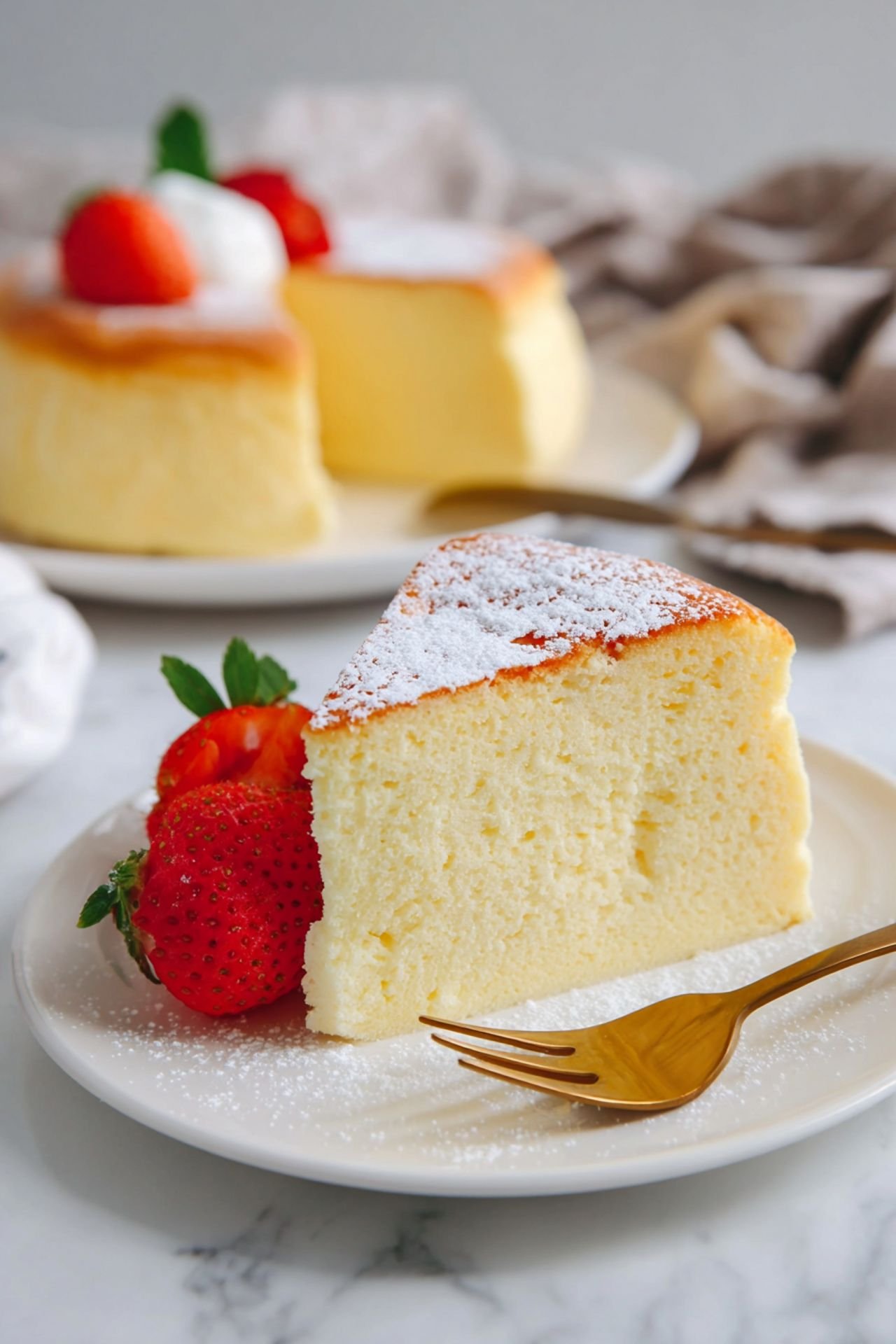
4) How to Make Japanese Cotton Cheesecake
Step 1. Preheat your oven to 300°F. Line an 8-inch cake pan with parchment and wrap it with foil on the outside to keep water out during the bake.
Step 2. In a double boiler, melt the cream cheese and butter together until smooth. Slowly whisk in warm milk. Take it off the heat and let it cool for a few minutes.
Step 3. Add the yolks into the cooled cheese mix. Whisk until smooth. Sift in the cake flour, cornstarch, and salt. Stir gently to combine. Don’t beat it. Think of it like folding laundry—gentle but thorough.
Step 4. In a clean bowl, beat the egg whites. Once frothy, add cream of tartar. Add sugar gradually and beat until stiff peaks form. You’ll know it’s ready when it looks like glossy shaving cream and holds its shape.
Step 5. Fold one-third of the whites into the batter to lighten it. Then gently fold in the rest. Be patient. Don’t rush. You’re building air here. Don’t pop it all before it hits the oven.
Step 6. Pour into the pan. Set the pan inside a larger pan. Pour in hot water until it reaches an inch up the sides. Pop it all in the oven.
Step 7. Bake for 70 minutes. Then crack the oven door and leave the cheesecake in for 15 minutes to cool slowly. This helps avoid dramatic deflation.
Step 8. Let it cool to room temp, then chill for 4 hours or overnight. Trust me, this is where the texture magic happens. Japanese Meals never looked so delicate.
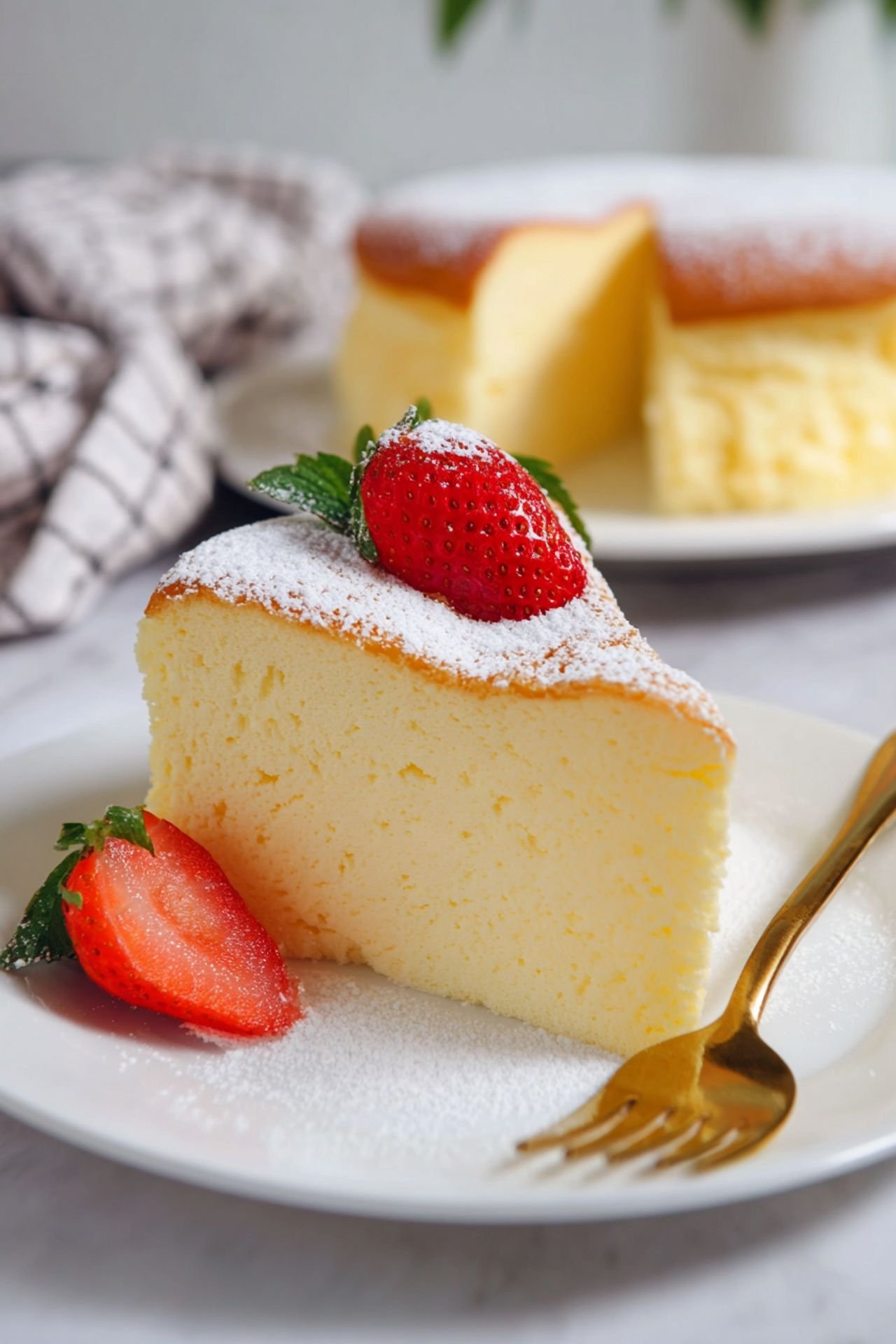
5) Tips for Making Japanese Cotton Cheesecake
Don’t skip the water bath. I’ve tried it. You’ll end up with dry, cracked cake, and no one wants that. The steam keeps everything light and moist—like a spa day for your cheesecake.
Make sure your egg whites are at room temp before beating. Cold whites don’t whip as well. Also, avoid even a speck of yolk in the whites—it’ll ruin your meringue.
Use a scale if you have one. Measurements by weight are more accurate, especially with flour. When you’re working with something as subtle as Japanese Dessert Recipes, precision helps.
6) Making Japanese Cotton Cheesecake Ahead of Time
Let’s be honest: this cake is better after a night in the fridge. The texture firms up and the flavor gets deeper. I like to make it a day ahead if I’m serving it for guests or a weekend treat.
After baking and chilling, wrap it up tightly with plastic wrap. Then let it sit in the fridge for at least four hours, but overnight is best.
This is one of those Japanese Food Recipes Easy enough to prep before bed and enjoy the next day with zero stress.
7) Storing Leftover Japanese Cotton Cheesecake
Store slices in an airtight container in the fridge. They’ll keep well for up to five days, but good luck making it last that long.
Want to freeze it? Go for it. Wrap tightly, then freeze for up to a month. Thaw in the fridge overnight and enjoy like it was fresh.
Japanese Food Dessert recipes like this one aren’t just delicious—they’re surprisingly low-maintenance.
8) Try these Dessert Recipes next!
9) Japanese Cotton Cheesecake
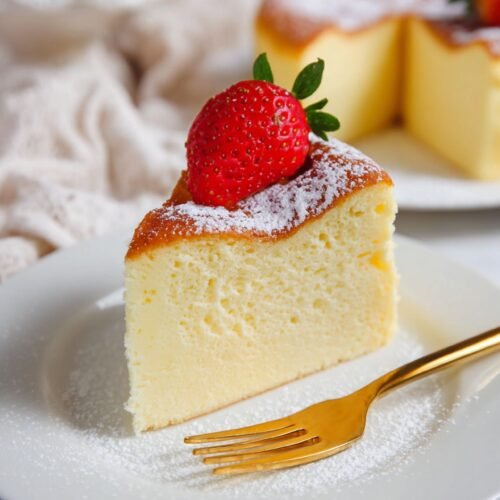
Japanese Cotton Cheesecake – Fluffy Classic for Japanese Food Recipes
Ingredients
- 8 oz cream cheese, room temperature
- 1/4 cup unsalted butter, room temperature
- 1/2 cup whole milk, warm
- 6 large eggs, separated
- 1/2 cup cake flour
- 2 tablespoons cornstarch
- 1/4 teaspoon salt
- 1/2 teaspoon cream of tartar
- 1/2 cup granulated sugar
Instructions
- Preheat your oven to 300°F. Line an 8-inch round cake pan with parchment paper. Wrap the outside with foil to prevent water from seeping in.
- Melt the cream cheese and butter together over a double boiler until smooth. Gradually whisk in the warm milk. Let it cool slightly.
- Add the egg yolks to the cream cheese mixture and whisk until combined. Sift in the flour, cornstarch, and salt. Stir gently until smooth.
- In a separate bowl, beat egg whites until frothy. Add cream of tartar, then slowly add the sugar. Beat until stiff peaks form.
- Fold the meringue into the batter in three additions, mixing gently to keep the volume.
- Pour the batter into the prepared pan. Place the pan in a larger pan filled with 1 inch of hot water.
- Bake for 1 hour 10 minutes, or until golden on top and set. Let it sit in the oven with the door slightly ajar for 15 minutes.
- Cool completely before removing from the pan. Chill for at least 4 hours before slicing.
10) Nutrition
Serving Size: 1 slice, Calories: 195, Sugar: 15 g, Sodium: 160 mg, Fat: 13 g, Saturated Fat: 7 g, Carbohydrates: 16 g, Fiber: 0 g, Protein: 4 g, Cholesterol: 85 mg
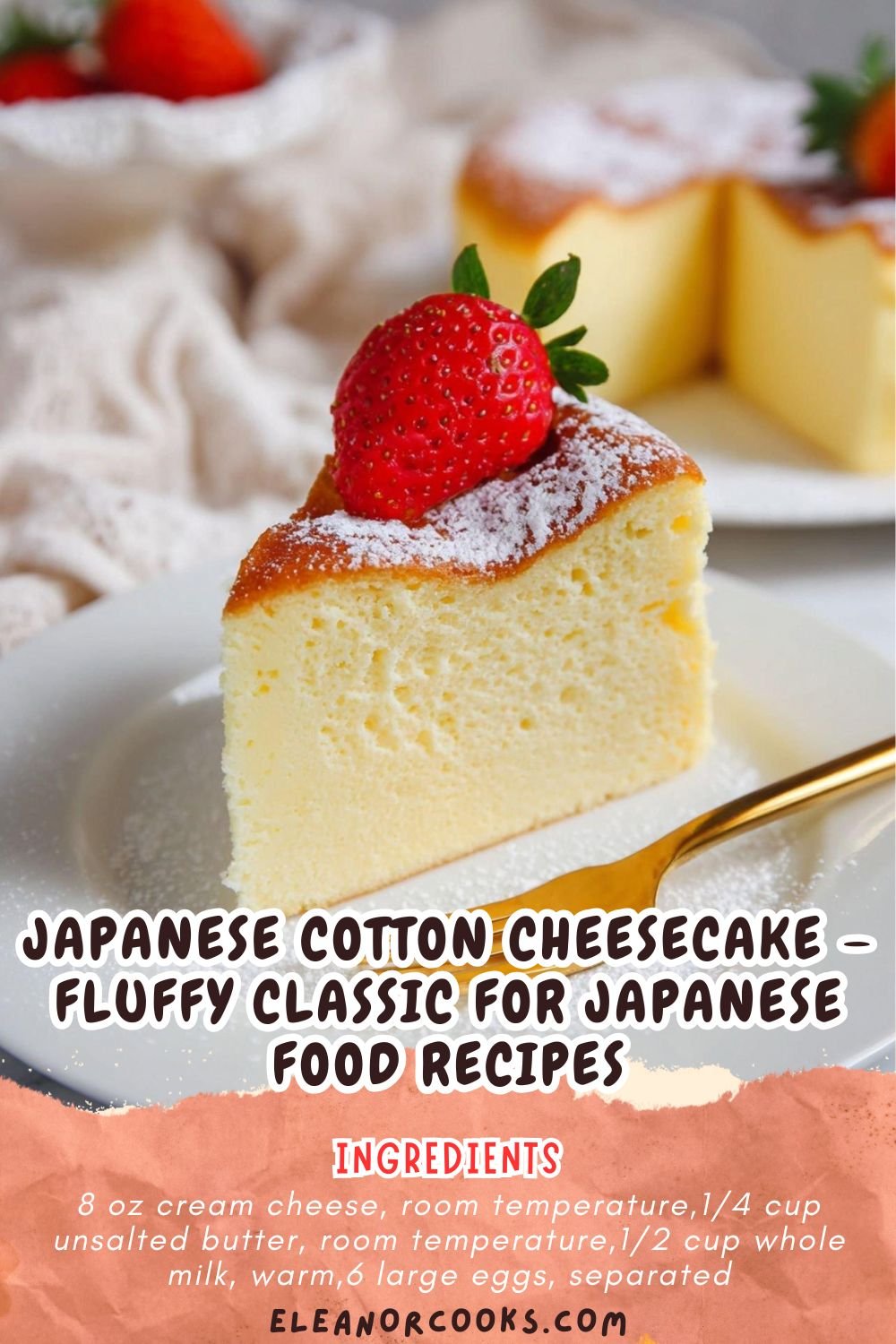






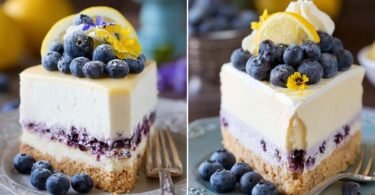

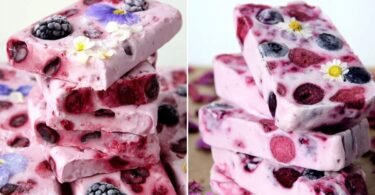
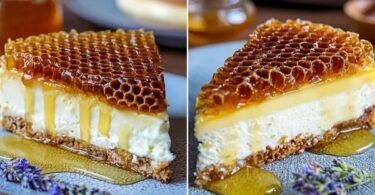
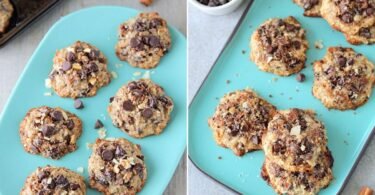
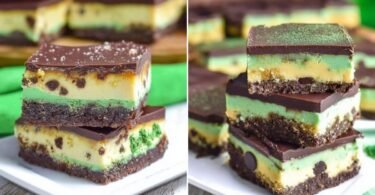
Leave a Comment